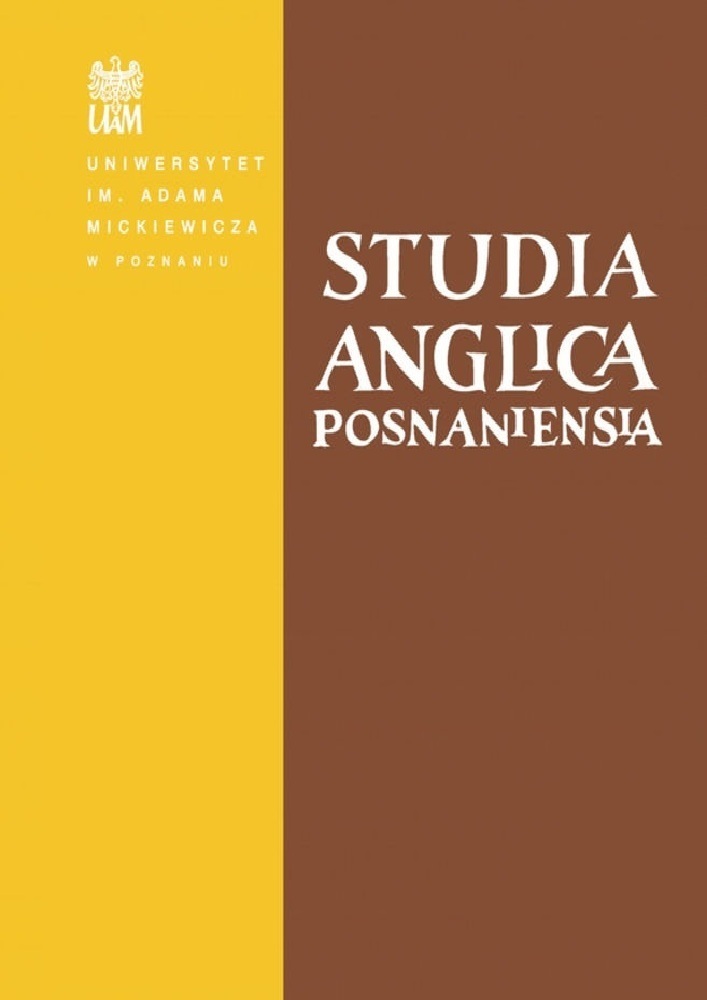Abstract
In late Old English it became common to find strange verb forms of which had less frequently appeared in earlier texts. It is clear that Old English paradigms started to modify their shapes, though their structure had never been completely established in the first place due to limited data. This article discusses some examples of Old English verbs which show a morphological merger in addition to phonetic, syntactic, or semantic resemblance, e.g., between wendan and gewendan, þyncan and þencan, læran and leornian, (ge)witan and (ge)wītan, blissian and bletsian, and biddan, (be)beodan, and forbeodan, so as to show the natural selection of Old English verbs in the process of lexical conflict.
References
Bosworth, Joseph & George Waring (eds.). 1888. The Gothic and Anglo-Saxon Gospels in parallel columns with the versions of Wycliffe and Tyndale. London: Reeves & Turner.
Crawford, S. J. (ed.). 1922. The Old English version of the Heptateuch, Aelfric's treatise on the Old and New Testament and his Preface to Genesis. (EETS, o.s. 160.) London: Oxford University Press.
DOE = Dictionary of Old English A - G on CD-ROM. Fascicle G and Fascicles A to F (with revisions).
Dictionary of Old English web corpus. http://www.doe.utoronto.ca/doecorpus/.
Holt, Robert (ed.), 1878. The Ormulum with the notes and glossary of Dr. R. M. White. Oxford: Clarendon Press.
Madden, Frederic (ed.). 1847. Laȝamon’s Brut, or Chronicle of Britain; a poetical semi-Saxon paraphrase of the Brut of Wace. London: Society of Antiquaries of London.
MED = Middle English dictionary, http://quod.lib.umich.edu/m/med/.
Napier, Arthur S. (ed.). 1894. History of the holy rood-tree, a twelfth century version of the cross legend. (EETS, o.s. 103.) London: Paul, Trench, Trübner & Co., Limited.
OED = Oxford English dictionary (3rd edn.), http://www.oed.com/.
Skeat, Walter. W. (ed.). 1871-1887. The Gospel according to Saint Matthew and according to Saint Mark; The Gospel according to Saint Luke and according to Saint John. Cambridge: Cambridge University Press.
Campbell, Alistair. 1959. Old English grammar. Oxford: Clarendon Press.
Gaaf, Willem van der, 1904. The transition from the impersonal to the personal construction in Middle English. (Anglistische Forschungen 14.) Heidelberg: Carl Winter.
Gorrell, Joseph H. 1895. Indirect discourse in Anglo-Saxon. PMLA 10.3. 342-485.
Ker, Neil R. 1957. Catalogue of manuscripts containing Anglo-Saxon. Oxford: Clarendon Press.
Laing, Margaret. 1993. Catalogue of sources for a linguistic atlas of early medieval English. Cambridge: D. S. Brewer.
Mitchell, Bruce. 1985. Old English syntax. Oxford: Clarendon Press.
Mustanoja, Tauno F. 1960. A Middle English syntax. Helsinki: Société Néophilologique.
Ogura, Michiko. 1981. The syntactic and semantic rivalry of QUOTH, SAY and TELL in Medieval English. (Intercultural Institute Research Monograph No. 12.) Osaka: Kansai University of Foreign Studies.
Ogura, Michiko. 1986. Old English ‘impersonal’ verbs and expressions. (Anglistica 24.) Copenhagen: Rosenkilde and Bagger.
Stanley, Eric G., 2013. Unlikely-looking Old English verb forms. In Andreas H. Jucker, Daniela Landert, Annina Seiler & Nicole Studer-Joho (eds.), Meaning in the history of English: Words and texts in context, 39-60. (Studies in Language Companion Series 148.) Amsterdam/Philadelphia: John Benjamins.
Sweet, Henry. 1982. Sweet's Anglo-Saxon primer. Revised throughout by Norman Davis. (9th edn.) Oxford: Clarendon Press.
Visser, Fredericus Th. 1963-1973. An historical syntax of the English language. Leiden: Brill.
